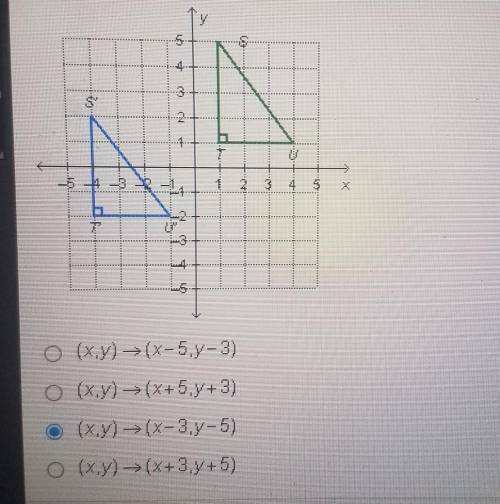
Mathematics, 09.03.2021 05:00 Tirone
Which rule describes the translation below? A. (x, y) = (x-5,4-3) B. (x, y) → (X+5.7+3) C. (x, y) → (X-3.y-5) D. (x, y) • (x+3,y +5)


Answers: 3


Other questions on the subject: Mathematics




Mathematics, 21.06.2019 21:30, Diamondnado3046
What percent of 18 is 24? and plz explain thx.
Answers: 2
You know the right answer?
Which rule describes the translation below? A. (x, y) = (x-5,4-3) B. (x, y) → (X+5.7+3) C. (x, y) →...
Questions in other subjects:



Mathematics, 16.03.2020 02:52





Mathematics, 16.03.2020 02:55




